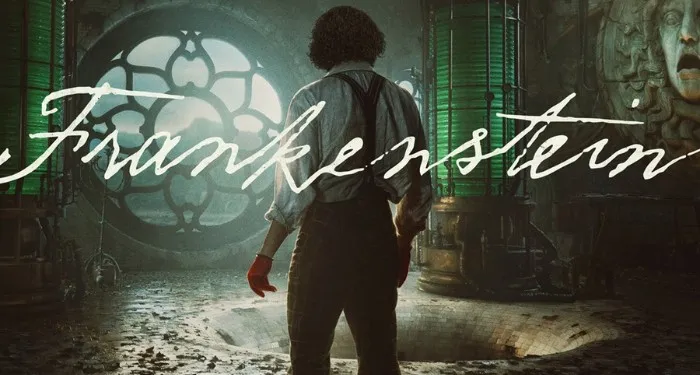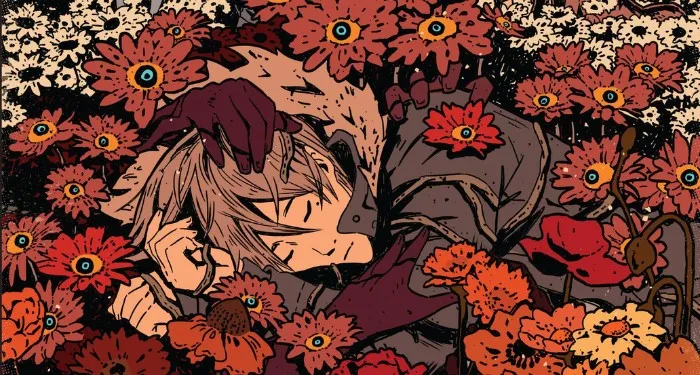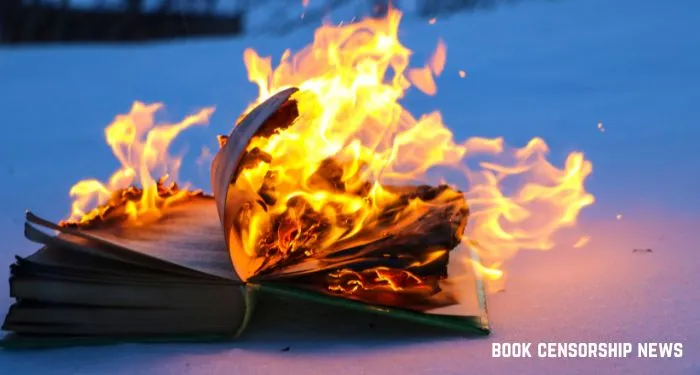President William McKinley presented imperialism as a gift to Filipinos. In an 1898 executive order, issued days after he signed the Treaty of Paris, which ended the Spanish–American War and ceded sovereignty of a number of territories held by Spain to the US, he described the broad aim of colonial occupation of the Philippines as “benevolent assimilation”:
We come, not as invaders or conquerors, but as friends, to protect the natives in their homes, in their employments, and in their personal and religious rights…
It should be the earnest and paramount aim of the military administration to win the confidence, respect, and affection [of Filipinos] by proving to them that the mission of the United States is one of benevolent assimilation, substituting the mild sway of justice and right for arbitrary rule.
This was a moral imperative that resonated with what Rudyard Kipling had called “the white man’s burden” in his poem urging the US to annex the islands. Annexation would safeguard Filipinos from the chaos of “arbitrary rule” created by their revolution against Spain, which began in 1896. Though the US had initially promised to support Filipino independence because it needed Filipino ground troops to help defeat the Spaniards, self-governance was deemed impossible: Filipinos were, in the words of William Howard Taft, the first civilian governor-general of the Philippines (and later US president), in a “hopeless condition of ignorance…subject, like the waves of the sea, to the influence of the moment.”
But instead of returning the US government’s fatherly love, Filipino insurgents seemed intent on making war. Fighting erupted in the outskirts of Manila in February 1899. “Why these hostilities?” the Schurman Commission, appointed by McKinley to investigate conditions in the Philippines and guide US policy, asked a month later. “What do the Filipinos want?” By demanding recognition of the independence that they had just wrested from Spain and attacking US forces, the commission wrote in their report, Filipinos appeared to have “misinterpreted” the “pure aims and purposes of the American government and people.” They needed to be disciplined, according to McKinley, “with firmness if need be, but without severity so far as may be possible.” This disciplinary action took the form of the Philippine–American War, which began in February 1899, raged until its official end in 1902, and then continued in episodic insurgencies throughout the next quarter century.
Faced with the superior arms of the Americans, Filipinos engaged in guerrilla warfare. The US saw this not as a necessary tactic but as a sign of native barbarity and cowardice. White soldiers responded with what they thought was an equivalent savagery, plundering and burning villages and food supplies, torturing captives, killing prisoners, and forcing communities into concentration camps to deprive fighters of local support. The Americans—many of whom had previously fought in military campaigns against Native Americans—referred to Filipinos with racial slurs like “n*****s” and “Injuns.” The military ceased to distinguish between fighters and civilians, and the war quickly became exterminatory. The most popular marching song linked the white man’s burden with mass murder:
Damn, damn, damn the Filipino
Pockmarked khakiac ladrone;
Underneath the starry flag
Civilize him with a Krag,
And return us to our own beloved home.
When they encountered criticism from Congress, colonial officials reasserted the benevolent aims of the war. For example, David Prescott Barrows, an anthropologist and the head of the Bureau of Non-Christian Tribes of the Philippines (and later a professor at Berkeley), stated in the Senate hearings of 1901 that the practice of administering the water cure—similar to waterboarding—to get Filipino insurgents to talk could not possibly have harmed them. Indeed, he said, civilians had willingly abandoned their homes and fields to seek US protection in concentration camps at the height of the war.
Taft claimed that torture was the only way to get Filipinos to cooperate. “There was never a war conducted, whether against inferior races or not, in which there was more compassion and more restraint and more generosity than the war against Filipinos,” he said. Despite the fact that the number of Filipino deaths from artillery fire, famine, and ecological havoc would reach more than 250,000 by 1902, Barrows described the war as a “real blessing…for without it, Filipinos would never recognize their own weaknesses; without it, we would never had done our work thoroughly.”
This combination of brutal violence and the rhetoric of benevolent assimilation is central to Kim Wagner’s important book Massacre in the Clouds: An American Atrocity and the Erasure of History, a detailed account of the 1906 massacre of hundreds of Moro people. Wagner, a historian of colonial India and the British Empire, investigates not only the killings but their eventual removal from American memory.
The Moros are the linguistically diverse Muslim people of the southern Philippines who converted to Islam as early as the thirteenth century. They had consistently resisted Spanish incursions and so stood outside the Christian polity established by Spain three centuries earlier. After the American takeover, they resisted attempts to impose new taxes, undermine the power of their chiefs, and send their children to colonial schools, among other policies that threatened to upend their way of life. In 1905 many fled from their villages to avoid complying with these rules, taking refuge inside the crater of a large volcano, Bud Dajo, on the island of Jolo in the Sulu Archipelago. The Americans tolerated this for some months, but before long both they and other Moros were blaming those on the volcano for an attack on a US armory as well as other crimes that were likely related to personal feuds rather than anti-American insurgency.
After several attempts to encourage them to come down from the volcano, the Americans began to plan an assault to put an end to what seemed like a blatant violation of colonial authority. As American troops advanced, hundreds of additional Moros fled to the crater. An army captain forwarded a military report to General Leonard Wood, governor of Moro Province, with the assessment, “They will probably have to be exterminated.” Wood wrote to another general, “I think the time has come for cleaning up the place.”
Led by Wood and various officers who were hardened veterans of the Indian Wars, American troops began their attack on March 6, 1906. It lasted for over three days. The soldiers made the difficult climb to the top of the volcano and, after heavy fighting, indiscriminately killed its inhabitants—six hundred people according to the official count, but closer to 1,200 according to eyewitnesses—while losing only eighteen men. The bodies of dead Moros lay in the crater, a ghastly scene that even soldiers recoiled from.
Captain Edward Lawton reported:
The whole crest of the mountain was covered with corpses, the bodies filled with wounds of every description, headless and dismembered trunks seated about as they fell, skulls crushed and brains scattered about, disjointed hands, legs, etc. here and there. One of the worst, most pitiful features of the fight, one to invoke the pity of the most hard-hearted, was the sight of the little helpless babies, some with a number of wounds, groping amid the mass of dead for the mother’s breast. Women would occasionally be found struggling to sit erect hemmed in by the mass of dead around them.
Private Frank Townsend wrote to his mother:
It was a terrible slaughter, but could not be averted. The intense heat, with sight and scent of so much blood, crazed me…and I fought like a demon [against] everything in reach of me regardless of age and sex. When I lost my gun, I picked up a bolo and I sure did some slaughter with that. My clothes were wet with blood, and I was bareheaded and there was blood in my hair.
The massacre made for sensational news in the United States when it was initially reported. Senate hearings were held to investigate the atrocity, especially reports that women and children were killed, which suggested that soldiers had descended to a kind of savagery Americans preferred to associate with native peoples. General Wood and other military officials defended these cruelties, claiming that women had dressed up as men and attacked the soldiers and that men used babies as human shields. Before long, shock at the killings turned into sympathy for the soldiers. A consensus emerged that it was necessary to kill the Moros who refused to submit and threatened the army, that the killing began only after the negotiations had failed, and that the massacre was a way of advancing the civilizing imperatives of imperial rule. Eventually the event disappeared from popular consciousness and barely figured in official accounts.
Wagner meticulously reconstructs the conditions and events that led to this horrific massacre, and tracks how it was ultimately erased from collective American memory, by investigating the social history of a remarkable photograph. A few pictures of the massacre survive today—there were several photojournalists present—but the photo that Wagner focuses on stands out for a number of reasons. It was the most widely circulated image of the killings because of its sharpness, clarity, and aestheticized portrayal of the massacre. In the image, the dismembered bodies of Moros are arranged in a tableau in the foreground. A woman is situated off-center amid the men with her breast visible and a baby on her lap, as the sun casts its rays on her body—Wagner thinks she was dragged into that position for the photograph after her death. American soldiers line up above the corpses. Like in many other colonial photos taken in the aftermath of battle, the men project an air of mastery over the scene. Wagner writes:
The soldiers are posing with the bodies of the people they have killed as if they were so many trophies…. [They] invoke a distinct vision of American masculinity, in which the pioneer, trapper and Indian killer merge into one.
Wagner eventually discovers the identity of the photographer: Richard “Aeronaut” Gibbs, a soldier turned commercial photographer who was brought along to Bud Dajo by a reporter. Gibbs soon began selling prints and postcards of the massacre, which were popular with US soldiers, who kept them in albums alongside anodyne personal mementos. “The proximity of idyllic scenes of settler life in the tropics and harrowing images of a massacre within carefully curated albums remains a visceral testament to the normality of extreme violence” as a feature of imperialism, Wagner writes.
Several months later Gibbs’s photo was published in Harper’s Weekly with an article that framed the actions of American troops as self-defense against “outlaws.” The photo was reproduced by the Anti-Imperialist League, which sent it to members of Congress and the press as the latest example of an American atrocity in the colony. In 1907 the president of the league, Moorfield Storey, sent a copy of the photo to W.E.B. Du Bois, who called it “the most illuminating thing I have ever seen.” He wanted a larger copy hung in his office at Atlanta University to show the terrible fate that befell racialized subjects.
In the end, however, he never received an enlarged copy—the original glass plate had been “accidentally” broken by General Wood in Gibbs’s studio a month after it was made, likely owing to concerns, communicated from a US official to Wood’s staff, that in the photo “due to light and shade the female corpse looks like that of a white woman.” Du Bois didn’t mention the image again, and he never learned more about it beyond the information included in its brief caption. Storey and the Anti-Imperialist League set the photo aside after it failed to elicit any response in Congress. Anti-imperialist politics soon fell out of favor, and the league was disbanded in 1920. Wagner writes that belief in
the efficacy of the photograph as a means of raising awareness and mobilizing public outrage was commonplace at the time. Yet ultimately, regardless of what Du Bois saw in the grim scene depicted in the photograph, it did not speak for itself at all.
Wagner’s careful tracing of the photo’s afterlife is one of the most illuminating aspects of the book. It not only provides the background of this particular event but also reveals the logic of exterminatory warfare and the shifting political meanings of the massacre, which resonate with those of other wars and atrocities in the twentieth and twenty-first centuries, from Korea, Vietnam, and Afghanistan to Iraq. Wagner quotes the journalist Jonathan Schell’s 1969 reflection on the recently published photos of the My Lai massacre:
When others committed them, we looked on the atrocities through the eyes of the victims. Now we find ourselves, almost against our will, looking through the eyes of the perpetrators…. The victims are indistinct—almost invisible.
The deaths at Bud Dajo continue to be rationalized: a 2005 biography of General Wood describes him fighting “fundamentalist Islamic terrorists” for “the first time in United States history”; a popular history of the Philippine–American War from 2014 describes the US campaign against the Moros as prefiguring the global war on terror.
The answer to one of Wagner’s central questions—why was this massacre forgotten?—remains elusive, beyond the fact that the myth of American exceptionalism and innocence requires historical amnesia. Each US atrocity, if it is acknowledged at all, is regarded as a “special case” rather than part of a larger historical pattern of racial violence, settler colonialism, native dispossession, black slavery, and white supremacy.
But what of the Moros themselves? For this is a book about not only America but also its non-American victims. Unlike Americans, the Moros do not have the privilege of forgetting these traumatic events. The archives contain no accounts from the very few survivors of the massacre or their descendants, so Wagner quotes instead several passages from the kissas, Moro oral narratives and songs in the Tausug language. One kissa, sung as early as 1909 though not recorded until the late twentieth century, recounts not the “massacre” but the “battle” of Bud Dajo. It tells of the Moro people’s endurance as they await the attacks inside the crater and their determination to fight: “All came out to fight them/The struggle was furious/People were shooting everywhere/There were so many killed/You could wash yourself in the blood.” In its impersonal depiction of the violence, the kissa neither lays blame nor dehumanizes the perpetrators. In the final verse, we hear:
A strong wind started blowing
There was thunder and lightning
A heavy rain fell
As the horse descended
In the midst of the storm
Bud Dajo will not surrender
The Moros would rather face death
That is the end.”
In 2022 Wagner went to Jolo to meet with the descendants of the victims, and they told him stories about the battle. “It haunts our memories until today,” one man said, recalling that, by the last day of the fight, only women and children were left alive, hiding in a mosque in the bottom of the crater while the women sang to drown out the noise of guns. A wedding had been taking place when the massacre began. This is depicted in Memories of a Forgotten War (2001), a documentary by Sari Dalena, who worked with local people to reenact scenes from the war. She told Wagner that at the conclusion of the filming, one of the women who played dead went into a trance, and other actors followed suit. They claimed that spirits of the dead had possessed them and told them grim stories about the battle.
Sadly, the battle is otherwise barely remembered beyond Sulu. After a difficult climb to the volcano’s crater, Wagner finds the lone marker commemorating it, put up by an officer of the Philippine military in 2022—ironic, given that the tradition of Christian hostility toward the Moros continues in the armed forces of the Philippines. In 1913 the colonial government initiated a large transfer of Christian settlers to Moro lands in an attempt to assimilate the Moros and suppress any separatism. In 1946, at the end of the Pacific War, the US gave the Philippines the independence it had long asked for, but the postcolonial republic, led by President Manuel Roxas, continued encouraging Christian settlement (as did the transitional commonwealth government just before independence). In the 1950s, under President Ramon Magsaysay, Christian settlements were further encouraged as a way of responding to the demands for land that had sparked peasant unrest such as the Huk Rebellion. The migrations created deep resentment among the Moro people, most of whom never recognized the republic, seeing it as nothing more than another colonial power.
The Moros resisted these incursions, and by the 1950s state-backed Christian and criminalized Moro militias were at war. In 1972 Ferdinand Marcos, supported by the US, declared martial law and sought to quell Moro resistance, now organized into a full-blown separatist movement. Attempts at diplomatic settlements failed, and in their place came the indiscriminate torture and killing of Moros and the bombing and burning of Moro villages.
In 1974, for example, the military arrived in the village of Malisbong, Sultan Kudarat province, claiming they were there to provide security. They proceeded to loot and raze homes, then killed more than 1,500 people for no other reason than that they were Muslims. They rounded up the men and ordered them to dig their own graves, then shot them in the village’s mosque. The women and children were forced to march to waiting naval barges, where many of the women were raped. The children were separated from their mothers and left alone, many dying of starvation and heat exposure. After another massacre, in 1973, one woman who escaped recounted to an interviewer that she ran away as her intestines fell out of her stomach. She described her body as “a document.”1 By the end of the Marcos regime in 1986, an estimated 50,000 Moros had been killed by the military and Christian paramilitary groups.2
Many other massacres have occurred in the late twentieth and twenty-first centuries in other villages in Muslim Mindanao, such as Manili, Kauswagan, Tictapul, Patikul, and Pata Island, along with occasional attacks in Jolo and most recently Marawi City. As with earlier massacres, the military bombed villages, executed men, and raped women indiscriminately. And as with Bud Dajo, nearly all of them remain largely forgotten or ignored outside of these areas.
Along with state and paramilitary violence, Mindanao has also faced persistent underinvestment, and it contains many of the country’s poorest provinces. Moro people have responded by organizing armed resistance, demanding secession from the government, and, more recently, negotiating for autonomous rule, with mixed results. Some Moros resort to smuggling and kidnapping to make money.
Between 2005 and 2006, in anticipation of the centennial of the Bud Dajo massacre, some Moro groups conducted research projects to collect the names of all those who were killed. They’ve also organized hikes up the mountain, both to honor those who died there and to memorialize subsequent massacres nearby, survivors of which sometimes join the hikes.
In the US, memories of the Bud Dajo massacre were replaced by celebrations of US might as an unqualified moral good. That sentiment is intensifying under the current administration. In his second inaugural address, President Trump praised McKinley, holding him up as a model for two policy priorities: imposing tariffs and expanding the overseas empire. One of Trump’s first acts as president was to change the official name of America’s tallest peak from Denali, its native Alaskan name, back to Mount McKinley. He has also, with the agreement of President Ferdinand Marcos Jr., promised to increase the US military presence in the Philippines to combat China. It’s the Moro people, and other victims of imperial violence, who are left to remember the price of US power.

















 English (US) ·
English (US) ·